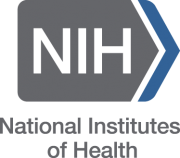Posted on May 17, 2019
Source: NIH

Since the first cases of what would become known as HIV/AIDS were initially reported in 1981, scientists and public health officials have been working to better understand HIV, develop strategies to effectively treat and prevent infection, and bring about an end to the pandemic. This effort remains a critical focus globally and for the United States.
We have the tools at hand that could—if fully implemented—end the HIV pandemic. Large clinical studies have proven that individuals with HIV who use antiretroviral therapy to achieve and maintain an undetectable viral load do not sexually transmit HIV to others—a concept known as undetectable = untransmittable (U=U). People who are at high risk for HIV can take a single daily pill known as PrEP, or pre-exposure prophylaxis, that is highly effective at protecting them from the virus. In addition, post-exposure prophylaxis, or PEP, provides a highly effective emergency means of preventing HIV transmission from a recent high-risk exposure and can serve as a bridge to PrEP.